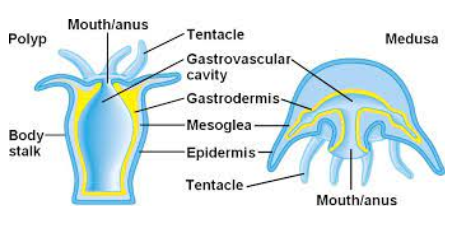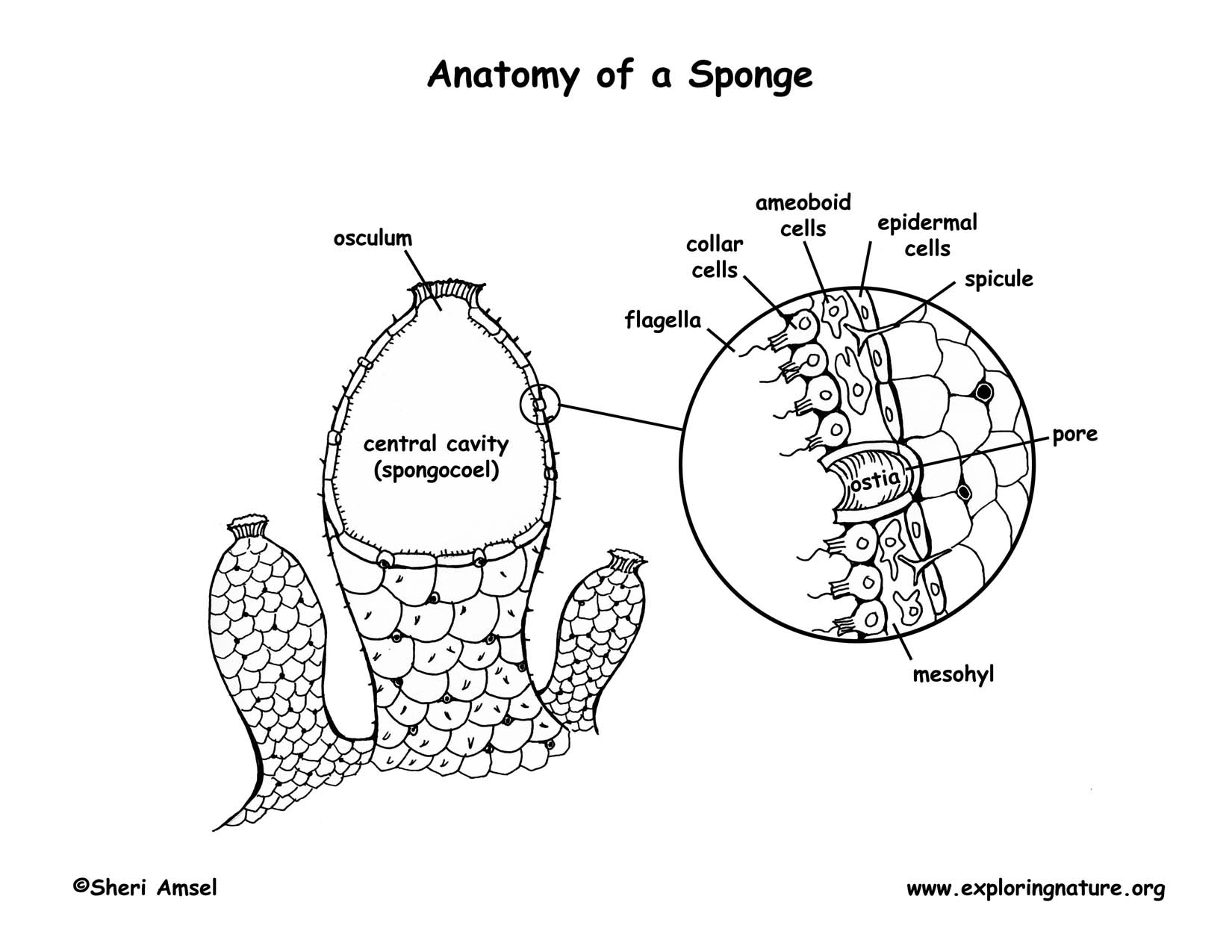ch. 24, section 3
5.0(1)
Card Sorting
1/26
Study Analytics
Name | Mastery | Learn | Test | Matching | Spaced |
|---|
No study sessions yet.
27 Terms
1
New cards
sponge characteristics:
* no tissues, no organs, most lack symmetry
* can break down into individual cells which will reform a new sponge
* can break down into individual cells which will reform a new sponge
2
New cards
what phylum do sponges belong to?
porifera (meaning pore bearer)
3
New cards
instead of having an endoderm and mesoderm, what are the two cell layers of a sponge?
1. epithelial-like cells: cover and protect the sponge
2. choanocytes: (collar cells) with flagella that line the inside of the sponge
4
New cards
flagella function:
whip back and forth to draw water into the body through pores
5
New cards
osculum function:
mouth-like opening at the top of the sponge where water and wastes will be expelled out
6
New cards
sponges are sessile filter feeders, meaning:
sessile: attached to stay in one place (as adults)
filter feeders: obtain food by filtering small particles out of the water
filter feeders: obtain food by filtering small particles out of the water
7
New cards
archaeocytes:
amoeba-like cells located between a sponge’s two cell layers that secrete spicules, make up the support structure, and are involved in digestion, egg/sperm production, and excretion
8
New cards
spicules:
small, needle-like structures that make up the support structures of sponges
9
New cards
what are the three classes sponges are split into based on their support system?
1. demospongiae
2. calcarea
3. hexactinellida
10
New cards
demospongjae:
have spicules composed of spongin fiber, silica, or both (won’t form net-like skeleton)
11
New cards
calcarea:
spicules are composed of calcium carbonate
12
New cards
hexactinellida:
spicules of silica joined together to make a net-like skeleton (glass sponges)
13
New cards
how do sponges respond to stimuli?
epithelial-like cells detect external stimuli and respond by closing their pores
14
New cards
what are gemmules?
formed by some freshwater sponges and are involved in asexual reproduction which develop during adverse conditions
15
New cards
benefits of sponges:
* are food for some fishes and turtles and forms habitats for a variety of animals
* used for household scrubbing purposes and in pharmaceutical products
* used for household scrubbing purposes and in pharmaceutical products
16
New cards
cnidarians characteristics:
* phylum: cnidaria, contains jellyfish, sea anemones, and coral
* aquatic floating or sessile
* aquatic floating or sessile
17
New cards
cnidarian body structure characteristics:
* one body opening and two cell layers (which organize into tissues)
* outer layer provides protection, inner layer provides digestion
* most have radial symmetry
* no blood vessels, excretory organs, or respiratory system
* outer layer provides protection, inner layer provides digestion
* most have radial symmetry
* no blood vessels, excretory organs, or respiratory system
18
New cards
cnidocytes:
stinging cell that arm the tentacles for feeding and digestion
19
New cards
cnidocytes contain nematocyst, which is:
a capsule that holds a coiled tube containing poison and barbs
20
New cards
how do cnidarians respond to stimuli?
they contain a nerve net that conducts impulses, the impulses cause contractions of muscle-like cells
21
New cards
what are the two body forms cnidarians have in reproduction?
a polyp and a medusa
22
New cards
polyps:
tube-shaped bodies with a mouth surrounded by tentacles
23
New cards
medusas:
umbrella-shaped bodies with tentacles hanging down
24
New cards
steps of reproduction in cnidarians:
1. (sexual stage) medusas release eggs and sperm into the water where fertilization occurs
2. zygotes develop into free-swimming larvae that settle and grow into poylps
3. (asexual stage) polyps reproduce asexually through budding which will form a new medusa (no free-swimming medusa which starts the cycle again)
25
New cards
what are the four main classes of cnidarians?
1. hydroids
2. jellyfish
3. sea anemones
4. corals
26
New cards
study where the mouth/anus and gastrovascular cavity of a polyp and a medusa is located at:

27
New cards
study where the osculum of a sponge is located at
